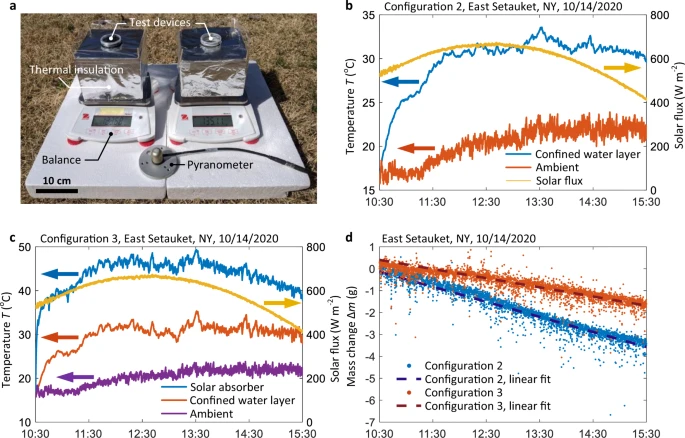Science Daily February 14, 2022
Salt accumulation is one of the key bottlenecks for reliable solar evaporation techniques. An international team of researchers (USA – MIT, China) developed a wick-free layered system, with dark material at the top to absorb the sun’s heat, then a thin layer of water above a perforated layer of polyurethane, sitting atop a deep reservoir of the salty water such as a tank or a pond. Through calculations and experiments they determined the holes size in the polyurethane sheet to be 2.5 mm across for optimal convective circulation between the warmer upper layer of water and the colder reservoir below. The circulation draws the salt from the thin layer above down into the much larger body of water below where it becomes well-diluted. They demonstrated over 80% solar-to-vapor conversion efficiency and salt rejection of 20 weight % salinity. The process could also be used to treat contaminated wastewater or to generate steam for sterilizing medical instruments, all without requiring any power source other than sunlight itself…read more. Open Access TECHNICAL ARTICLE

Outdoor test of the confined water layer structure in East Setauket, NY, USA. Credit: Nature Communications volume 13, Article number: 849 (2022)